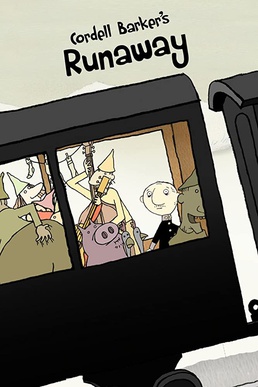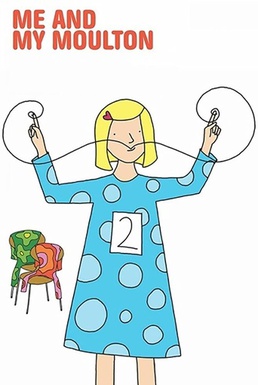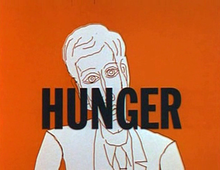Inbetweening, also known as tweening, is a process in animation that involves creating intermediate frames, called inbetweens, between two keyframes. The intended result is to create the illusion of movement by smoothly transitioning one image into another.

William Norman McLaren, LL. D. was a Scottish Canadian animator, director and producer known for his work for the National Film Board of Canada (NFB). He was a pioneer in a number of areas of animation and filmmaking, including hand-drawn animation, drawn-on-film animation, visual music, abstract film, pixilation and graphical sound. McLaren was also an artist and printmaker, and explored his interest in dance in his films.
Roman Kroitor was a Canadian filmmaker who was known as a pioneer of Cinéma vérité, as the co-founder of IMAX, and as the creator of the Sandde hand-drawn stereoscopic 3D animation system. He was also the original inspiration for The Force. His prodigious output garnered numerous awards, including two BAFTA Awards, three Cannes Film Festival awards, and two Oscar nominations.

Ryan is a 2004 short animated documentary film created and directed by Chris Landreth about Canadian animator Ryan Larkin, who had lived on skid row in Montreal as a result of drug and alcohol abuse. Landreth's chance meeting with Larkin in 2000 inspired him to develop the film, which took 18 months to complete. It was co-produced by Copper Heart Entertainment and the National Film Board of Canada (NFB), and its creation and development is the subject of the NFB documentary Alter Egos. The film incorporated material from archive sources, particularly Larkin's works at the NFB.

Ryan Larkin was a Canadian animator, artist, and sculptor who rose to fame with the psychedelic Oscar-nominated short Walking (1968) and the acclaimed Street Musique (1972). He was the subject of the Oscar-winning film Ryan.
Steve Capps is a pioneering American computer programmer and software engineer, who was one of the original designers of the Apple Macintosh computer and co-designers of the Finder in the 1980s. He also led development of the Apple Newton PDA and designed music software such as SoundEdit, before developing user interface (UI) designs for Microsoft's Internet Explorer and online/mobile payment systems.
Colin Archibald Low was a Canadian animation and documentary filmmaker with the National Film Board of Canada (NFB). He was known as a pioneer, one of Canada's most important filmmakers, and was regularly referred to as "the gentleman genius". His numerous honors include five BAFTA awards, eight Cannes Film Festival awards, and six Academy Award nominations.
City of Gold is a 1957 Canadian documentary film by Colin Low and Wolf Koenig, chronicling Dawson City during the Klondike Gold Rush. It made innovative use of archival photos and camera movements to animate still images, while also combining narration and music to bring drama to the whole. Its innovative use of still photography in this manner has been cited by Ken Burns as the source of inspiration for his so-called Ken Burns effect, a type of panning and zooming effect used in video production to animate still images.
Tony Ianzelo is a Canadian documentary director and cinematographer.

The Man Who Planted Trees is a 1987 Canadian short animated film directed by Frédéric Back. It is based on Jean Giono's 1953 short story The Man Who Planted Trees. This 30-minute film was distributed in two versions, French and English, narrated respectively by actors Philippe Noiret and Christopher Plummer, and produced by Radio-Canada.

Gerald Potterton was a Canadian director, animator, producer and writer. He is best known for directing the cult classic Heavy Metal and for his animation work on Yellow Submarine.
Peter Foldes was a Hungarian-British director and animator.

Runaway is a 2009 animated short by Canadian animator Cordell Barker. The film received a special jury award for short films at the Annecy International Animation Film Festival and was named the best animated short film at the 2010 Genie Awards. In 2010 the film won the Yorkton Film Festival Golden Sheaf Award for Best Animation.

Thomas Cullen Daly was a Canadian film producer, film editor and film director, who was the head of Studio B at the National Film Board of Canada (NFB).

Lipsett Diaries is a 2010 short animated documentary about the life and art of collage filmmaker Arthur Lipsett, animated and directed by Theodore Ushev and written by Chris Robinson. The 14-minute film was produced by the National Film Board of Canada in Montreal, where Lipsett had worked from 1958 to 1972, before committing suicide in 1986. The film is narrated by Xavier Dolan.
Wendy Tilby and Amanda Forbis are a Canadian animation duo. On January 24, 2012, they received their second Oscar nomination, for the National Film Board of Canada (NFB) animated short film, Wild Life (2011). With their latest film, The Flying Sailor, they received several nominations and awards, including for the Best Canadian Film at the Ottawa International Animation Festival, and on January 24, 2023, they received a nomination for the 95th Academy Awards under the category Best Animated Short Film.
John Spotton C.S.C. was a Canadian filmmaker with the National Film Board of Canada.
Mindscape is a 1976 pinscreen animation short film by Jacques Drouin, produced by the National Film Board of Canada.

Me and My Moulton is a 2014 Canadian-Norwegian animated short film written and directed by Torill Kove. It premiered at the 2014 Annecy International Animated Film Festival on 10 June 2014. It was nominated for the Academy Award for Best Animated Short Film at the 87th Academy Awards. Me and My Moulton won the Golden Sheaf Award for Best Animation at the 2015 Yorkton Film Festival.
Robert Verrall is a Canadian animator, director and film producer who worked for the National Film Board of Canada (NFB) from 1945 to 1987. Over the course of his career, his films garnered a BAFTA Award, prizes at the Cannes Film Festival and Venice Film Festival, and six Academy Award nominations.









